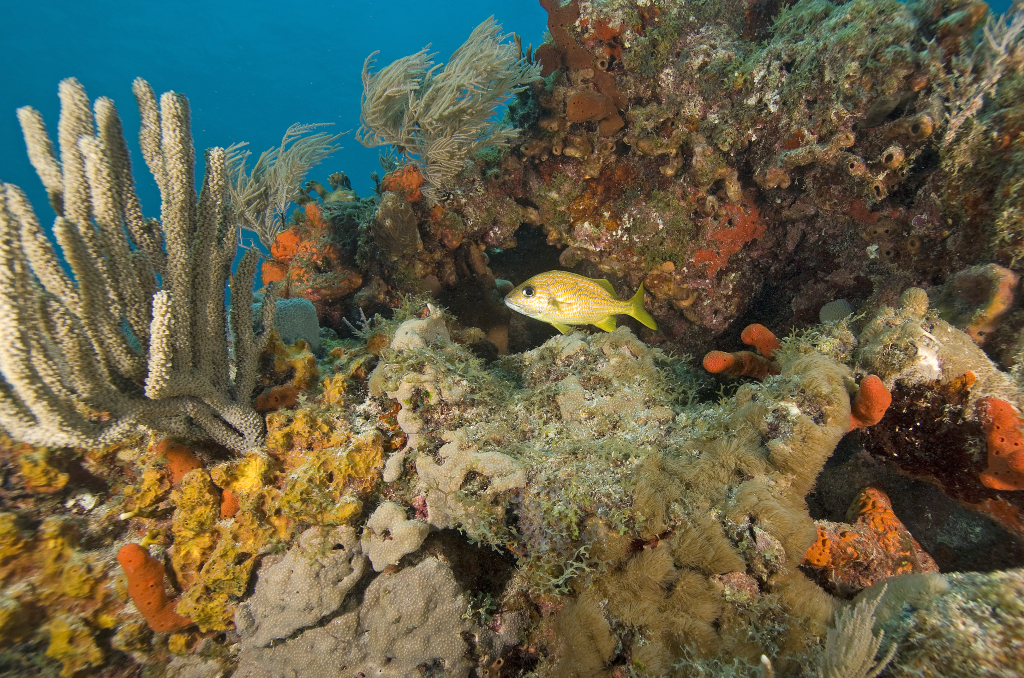Photo Credit: K Grif/ Shutterstock
The National Oceanic and Atmospheric Administration (NOAA) and its Florida Keys National Marine Sanctuary are ready to restore nearly 3 million square feet of the Florida Reef Tract thanks to an intent to raise almost $100 million to restore seven coral reef sites off the Florida Keys. This is one of the largest strategies ever proposed in the field of coral restoration, NOAA officials said in an announcement made on December 9. Officials also said they would support the effort, which will take several decades, and work with partners to secure public and private funding for the project.
Coral coverage in the Keys has been reduced since the 1970s by tropical cyclones, heat-induced coral bleaching, cold snaps and disease events.
Since 2004, restoration efforts have been underway involving growing and transplanting corals for the Keys. Some of these coral reefs are Carysford Reef, Horseshoe Reef, Cheeca Rocks, Sombrero Reef, Newfound Harbor, Looe Key Reef and Eastern Dry Rocks. Officials for NOAA said the sites represent a diversity of habitats that support a variety of human uses, span the full geographic range of the Florida Keys and show a high possibility of success.
“We have identified some iconic reefs here in the Keys that we want to help restore,” sanctuary superintendent Sarah Fangman said. “These reefs have been suffering from a number of threats for years as have reefs around the world.”
Stony coral tissue loss disease (SCTLD) has been the main reason for the restoration efforts. SCTLD is a new lethal disease first reported off Miami’s coast in 2014. The cause of the disease is unknown and has been found in over 20 species of corals throughout the Caribbean, Jamaica, Mexican Caribbean, St. Maarten and more recently St. Thomas, USVI and the Dominican Republic. The disease causes the corals to get “blotchy” lesions and die fairly quickly within weeks to months.
Mission: Iconic Reefs, as the project is being called, involves 2 phases in order to incorporate a phased implementation over the next 20 years. The first phase takes about 10 years to complete and involves restoring different corals and fast-growing species that have not been affected by the current outbreak of stony coral tissue loss disease. The phase also involves incorporating resilient corals of other slower-growing species. Once the phase is complete, scientists are to remove harmful species like algae and snails, and re-introduce sea urchins and crabs to help keep the reefs clean and healthy.
Phase 2 will concentrate on introducing slower-growing coral species to the healthy reefs. These slower-growing species will have been propagating from colonies that survived or have been rescued from bleaching and disease events. The goal is for the coral reefs to reach a level of self-sustainability, after diversity and natural ecological function have been re-introduced.
Restoration efforts are being made possible by governmental and environmental agencies such as the State of Florida, Coral Restoration Foundation, Mote Marine Laboratory and Aquarium, The Florida Aquarium, The Nature Conservancy, Reef Renewal and the National Marine Sanctuary Foundation.
NOAA officials say they have even received inquiries from government leaders asking what can be done to help restore the reefs safely.
Melissa’s career in writing started more than 20 years ago. Today, she lives in South Florida with her husband and two boys.

